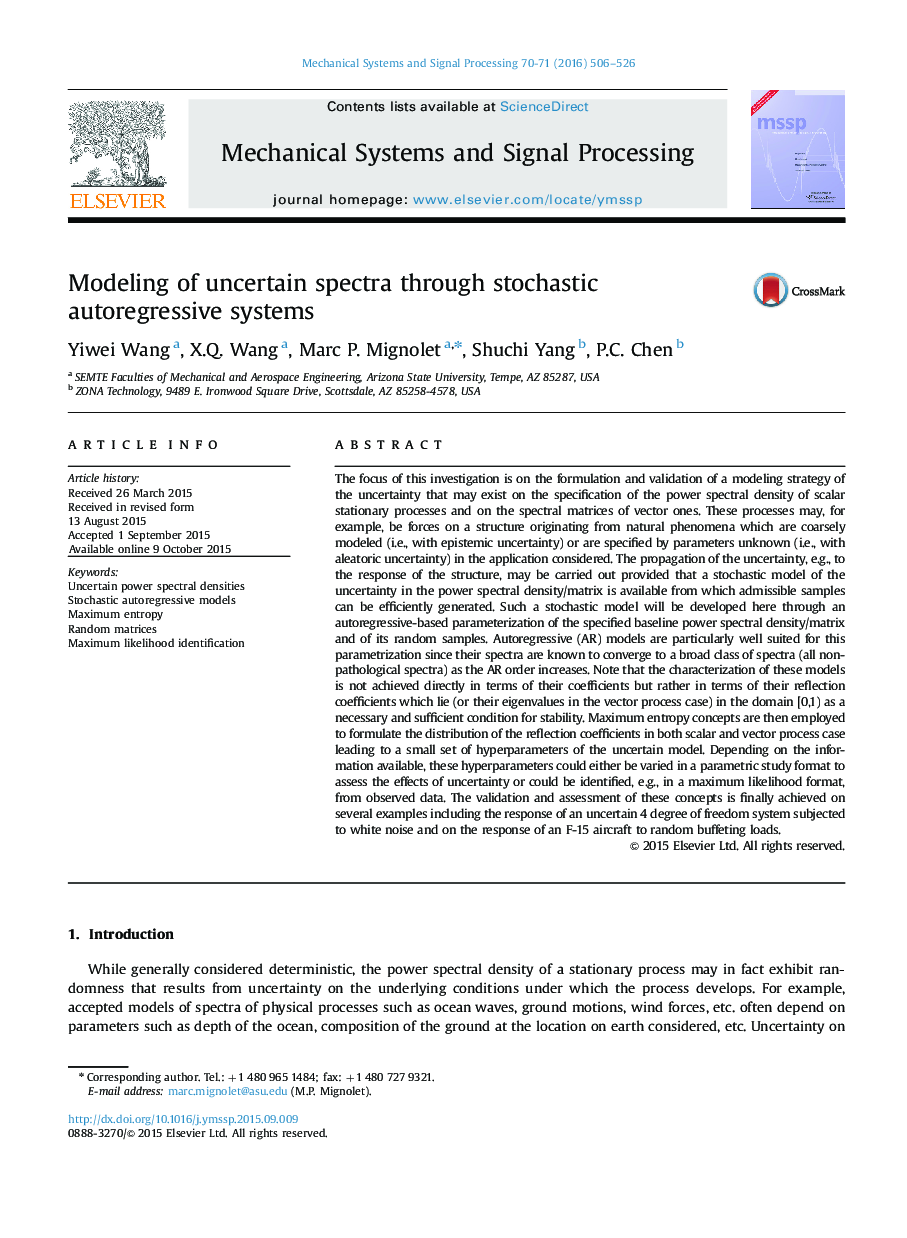| کد مقاله | کد نشریه | سال انتشار | مقاله انگلیسی | نسخه تمام متن |
|---|---|---|---|---|
| 565443 | 1451859 | 2016 | 21 صفحه PDF | دانلود رایگان |
• Modeling of uncertainty in power spectral density or power spectral matrix achieved.
• Use of autoregressive models with random parameters.
• The procedure is valid for both power spectral density of scalar processes and power spectral matrices of vector processes.
• Application/validation examples are presented that demonstrate the ease of application and/or identification.
The focus of this investigation is on the formulation and validation of a modeling strategy of the uncertainty that may exist on the specification of the power spectral density of scalar stationary processes and on the spectral matrices of vector ones. These processes may, for example, be forces on a structure originating from natural phenomena which are coarsely modeled (i.e., with epistemic uncertainty) or are specified by parameters unknown (i.e., with aleatoric uncertainty) in the application considered. The propagation of the uncertainty, e.g., to the response of the structure, may be carried out provided that a stochastic model of the uncertainty in the power spectral density/matrix is available from which admissible samples can be efficiently generated. Such a stochastic model will be developed here through an autoregressive-based parameterization of the specified baseline power spectral density/matrix and of its random samples. Autoregressive (AR) models are particularly well suited for this parametrization since their spectra are known to converge to a broad class of spectra (all non-pathological spectra) as the AR order increases. Note that the characterization of these models is not achieved directly in terms of their coefficients but rather in terms of their reflection coefficients which lie (or their eigenvalues in the vector process case) in the domain [0,1) as a necessary and sufficient condition for stability. Maximum entropy concepts are then employed to formulate the distribution of the reflection coefficients in both scalar and vector process case leading to a small set of hyperparameters of the uncertain model. Depending on the information available, these hyperparameters could either be varied in a parametric study format to assess the effects of uncertainty or could be identified, e.g., in a maximum likelihood format, from observed data. The validation and assessment of these concepts is finally achieved on several examples including the response of an uncertain 4 degree of freedom system subjected to white noise and on the response of an F-15 aircraft to random buffeting loads.
Journal: Mechanical Systems and Signal Processing - Volumes 70–71, March 2016, Pages 506–526
